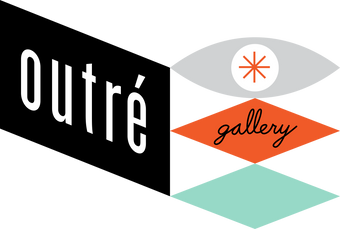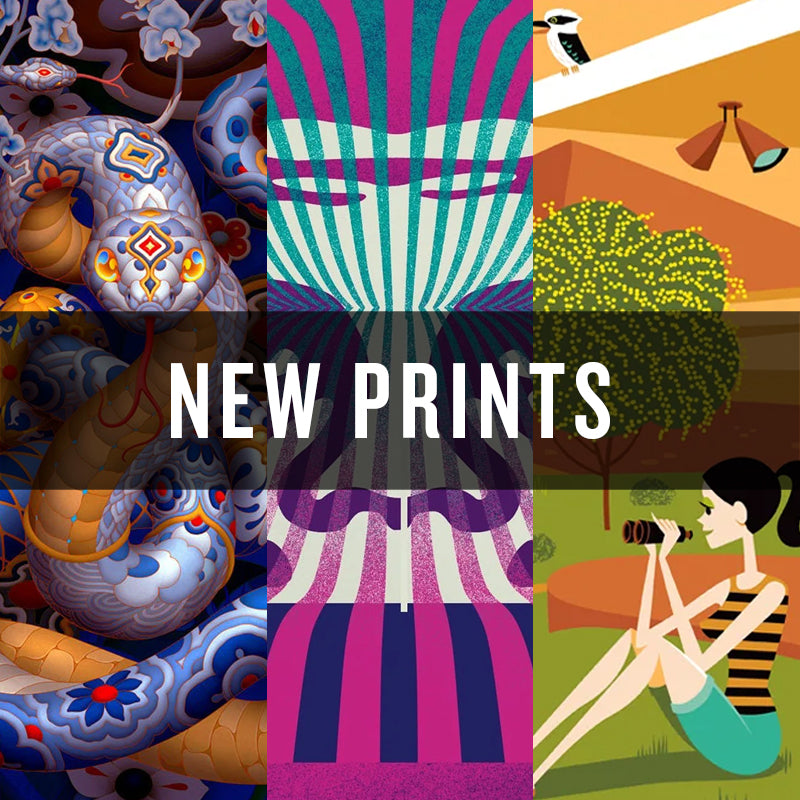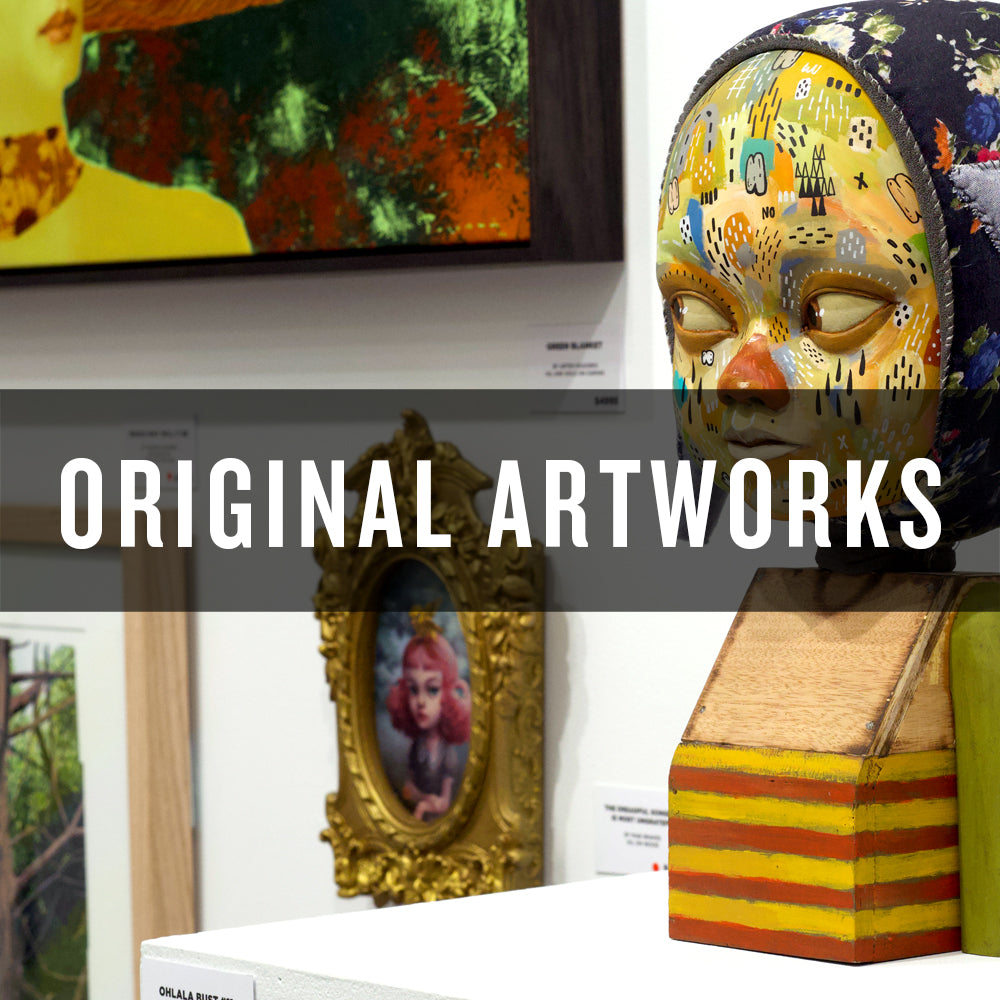
Lauren YS is a Los Angeles-based artist whose work is influenced by multiple stages of focus, both geographically and in practice. With dynamic bouts in academics, literature and writing, teaching, illustration, and animation leading up to their arrival in the urban art sphere, the influences of these phases of their own career add up to a robust style of murals and fine art. Lauren's work is influenced by dreams, mythology, death, comics, love, sex, psychedelia, animation and her Asian-American heritage.
Interview by Viet-My Bui. Photos supplied by Lauren YS.
Tell us about your art journey: from your earliest childhood memories, to the path that led you where you are today.
That's quite a lot to cover in one answer, haha, but I definitely spent a lot of my childhood doodling on the walls and daydreaming, walking off and getting lost. I remember one year I won our family a Christmas tree by coloring a snowman for some kind of contest. I started drawing on walls with sharpies during middle school and my mom always let us choose which color to paint our rooms, so I guess I learned at an early age to take some kind of agency over the spaces I occupied.
In college I ran a co-operative house that was completely full of murals and I think that's where my interest in painting large scale really took hold. I picked up spray paint sometime around 2013 and from there sort of worked my way clumsily into a style, working larger and larger, and honing into content and composition. My style comes from a mixture of comic, animation, art history and Asian influences, and I often include elements of regional mythology into whatever I am painting.
Lately I have been painting more work with a social justice bent, especially within narratives surrounding the Asian American community, as I’ve realised how crucial it its to use my platform to illuminate and create discussion around the diaspora, as well as other issues I identify with—queer worlds, feminism, reproductive rights, anti-racism, environmentalism, psychedelia and family.

Your Asian-American heritage plays a pivotal role in your practice. How do you think it has informed your artworks over time?
I love researching the mythologies that build the framework of a culture's imagination. Every place has an origin story or a set of stories by which various people build their cultures, and I think that sort of platonic imagined world can say more about the fabric of the human experience, sometimes more than concrete ideals. The stories we believe and tell over generations hold an immense amount of power and say so much about regional character.
At the moment, I am researching Chinese mythology, as part of my interest in embracing more of my heritage, so these pieces I’ve created are all my imagined versions of these entities. I find that the process of translating an ancient Chinese god, goddess or fantastical figurehead through my own lens gives me a powerful opportunity to sit and think about who this entity is, what they symbolise, how their presence may have manifested for people in Asia for centuries, and what they symbolise to me within my own context. It’s a really beautiful way to engage with my own culture from afar.
There is a beautiful sense of unfettered psychedelia and an explosion of colour in your work. Do they manifest fully realised in your mind, or are they a stream of consciousness? Do you keep a sketchbook to flesh out your ideas?
Sketchbooking has been an integral part of my practice for my entire life. Before I had a career, my sketchbook was my favourite place to escape to—it was the most important thing to me, the only outlet I had to really express myself. I have a stack of about 30 or 40 full ones in my shelves, and if there was a fire they would be the first things I’d grab.
When I find time to decompress from shows and murals, I always return to my sketchbook, as a place where I can sort of unwind and scribble without an audience or scrutiny, to let ideas wander freely. I never had much color work in my sketchbooks. Color really only came into my world when I picked up spray paint. But lately I’ve been deeply enjoying working out color schemes on my iPad and drawing inspiration from natural landscapes, deep sea creatures, psychedelic/punk/retro graphic design, and from Asian art, spanning many centuries. Asian art has so many incredible colorways, symbolism and threads of meaning – I love smashing up those elements with my personal style, creating a kind of visual melting pot of historical and imagined aesthetics.

What routines and rituals do you need in place to create art?
I am not too stringent about my needs simply because I have to be really flexible to make work wherever I go, and given whatever resources are available (for example, these drawings were made in Massachusetts, Hawaii, Sacramento and DC) but there are a few constants that make ‘the flow’ more accessible. I need to have audio narrative or music when I’m drawing or painting, and especially when I paint murals. Other than that, nothing else is really crucial.
While making these drawings I actually listened to a lot of podcasts about China in the 1940s, the Chinese-American experience in California during the late 1800s, and Chinese folk tales. Elements of storytelling always make their way into the work and I love that kind of stream-of-consciousness symbiosis while creating.
The symbolism and motifs in your work range from mysticism and the occult, to fantastical monsters and aliens, and death and sexuality. What content do you consume to fuel and inform your curiosities?
I listen to a lot of podcasts about the paranormal, the macabre, serial killers, as well as nature, wildlife and geopolitics. I love content like Love, Death and Robots that sometimes take myth and rework them into an animated format, or this incredible podcast called Peking Noir that chronicled the life of a person named Shura, who was a gender-shifting figure during the 40s in China. Anything that lends an element of magical realism to history or civil rights is really interesting to me. Also a lot of ‘alien’ or ‘paranormal’ language shows up in content that discusses queer worlds, because I think a lot of queer and gender non-conforming people (me included) find identification within the frameworks of ‘the other’ and strangeness, that I really get into that intersection.

You have said that you believe in the power of objects. What are your favourite trinkets or talismans in your possession, and why?
l have this little jar I found in my popo’s bathroom after she passed that is full of teeth. I treasure it because I don’t know whose teeth they are, or why she kept a hold of them. They could be mine, or my siblings', or my cousins', but there’s something about treasuring the physical objects that came from someone you love. I also have a friend’s IUD, my little sisters wisdom tooth, and a ton of my friends and loved one's hair that I collect for bespoke projects and rituals. I also have come to love the kitschy talismans that old Chinese people seem to collect more and more from markets, little sculptures made from jade and brass and ceramic that symbolize animals/figures of power and reverence. It makes me feel more in touch with the worlds of Chinese antiquity.
I love that you continually find ways to empower yourself through your art practice and amplify your voice. How do you remain authentic and passionate whilst also navigating the business side of being a full time artist?
I think there’s something special about the mural life that makes it really easy to keep a grip on who you are and the pulse of what’s gong on in the world, and keep you humble. Travelling so much and working on the streets naturally forces you into the centre of a city’s culture, and therefore also the social and political issues it is dealing with. It’s really important to be aware and receptive to the communities you paint in, and it’s deeply inspiring to me to meet people in those communities and learn what they care about, and find ways to discuss it through my work.
Mural work is hard and humbling – it's not about VIP lounges, celebrities and being clean. It's quite often back-breaking, against-the-elements, problem-solving, very dirty, mechanical, and rough and tumble. I love everything about it – the difficulties of the industry make me love it more. The more you know, the more you understand how little you know – and I'm deeply invested in finding ways to create more good with my platform and find ways to uplift others, and educate on topics that I hope could help the world become more illuminated.

You are a fantastically prolific artist, often working on multiple pieces at a time, juggling multiple projects both large and small, travelling often and making always. How do you stay afloat and remain focused? Do you ever deal with burnout?
It is very ironic to answer these questions from a car from Santa Cruz to LA after a month-long mural tour in which there were definitely a handful of burnout moments. I am aware that I quite often tow the line between what is manageable and what is a little bit dangerous. I just really, really enjoy working hard, and painting murals gives me more joy and energy than anything else, which always feeds back into my gallery work. But I have definitely have had to make some changes to allow my body and mind to process so much work, including partying a lot less and trying to be a bit more organised and less distracted. But I really do enjoy the grind and the multi-layered parts of my practice. I love switching between murals, to paintings, to animation, to tattoo and back, and seeing how concepts and styles translate from one project to another. I suppose I have trouble staying still or being quiet with myself – perhaps that is not a good thing!
We are so excited for your upcoming solo show at Outré Gallery! Can you share with us the concept and process behind the show?
I mentioned earlier on that these drawings are based off of Chinese myths and deities, which came from a long-burning desire to draw the deity Guanyin, who is long hailed as China’s god/goddess of benevolence. Guanyin is also well known to be trans and/or gender fluid, as their mythology has shifted genders throughout time, hence my personal interest.
From there I expanded my research to include other deities whose histories caught my interest, and settled on drawing Meng Po, who is the goddess of the underworld, but has a fascinating story different to the Western idea of this character. It is told that Meng Po serves a special soup at the bridge to the underworld that will let the partaker forget all of their sins before they enter. I think this is a really beautiful and strangely benevolent mythology that really differs from the Western viewpoint, in which we always imagine being eternally punished for our sins after death. It indicates a sense of unity in death that exists in the Chinese imagination – perhaps we all deserve peace once we leave this earth, perhaps we all return to a blank slate?
The last drawing is my imagining of the Jiangshi, the Chinese hopping vampire, who is also more like a zombie figure. They wear tattered clothing from the Qing Dynasty (the fashion from which I am totally obsessed with) and absorb people's life forces, or qi. As a lover of vampires and Chinese history I couldn't resist illustrating them.

How has the pandemic affected your art practice?
I think it’s definitely made me more aware of the importance of my studio space, as it shifted from just a resource to an actual literal creative haven, and physical form of my internal landscape. If you can’t leave your house, does your psyche expand past your front door? The space you occupy becomes so much more vital to your creative autonomy. I also just came to really value and appreciate travel and mural work so much more, as I was faced with the possibility of not doing it anymore, which gave me an elevated sense of gratitude for what I do. Aside from that, I also was able to connect more with my community in LA and to local issues when I wasn’t able to before, which was a powerfully galvanizing element in my becoming more politicised. I really tried to take the pandemic as a positive, as I think we all did, and hope that a time of deep reflection and global anguish could also produce more positivity and mindfulness.

What do you feel is an artist’s role in the world?
I think it's vital for anyone with a platform to at least try to do some kind of net good with the space they occupy. I am really inspired by the way many artists in all industries have taken up global causes, as the younger generation of creatives and taste-makers really are the ones who have the power to make change. People consume art, music and film more readily than anything, and if those mediums carry messages that educate and empower, then maybe we can move forward and uplift each other with more expediency. There is no boundary between art and the social fabric of the world – art has always been political, and the visual history of the world and the future will also be woven with the threads of policy, social justice and legislation. I think we all have a role to play in the way the world functions. There is too much evil not to use whatever tools you have to battle it.
What has been a defining moment for you?
The shooting in Atlanta was obviously an extremely powerful and devastating moment for so many of us in the Asian American community. Violence has a way of binding people in a really visceral way – people you identify with, people who look like your family and loved ones – it gives you pain in a very strange way, makes you feel helpless and scared, but also lights you on fire. I wanted to find ways to make my work more than just visually interesting or ‘cool’ – I wanted to elevate the impact of representation, to imbue more power into my symbolism, and to find more concrete ways to empower the AAPI community as we know just painting pretty things can't necessarily save lives. I really believe in mutual aid and feel really good about diverting more of my community based work towards the people whose messages I am drawing from, and look forward to doing more of that in the future.
Thank you for your sharing your work and passionate beliefs with us!



